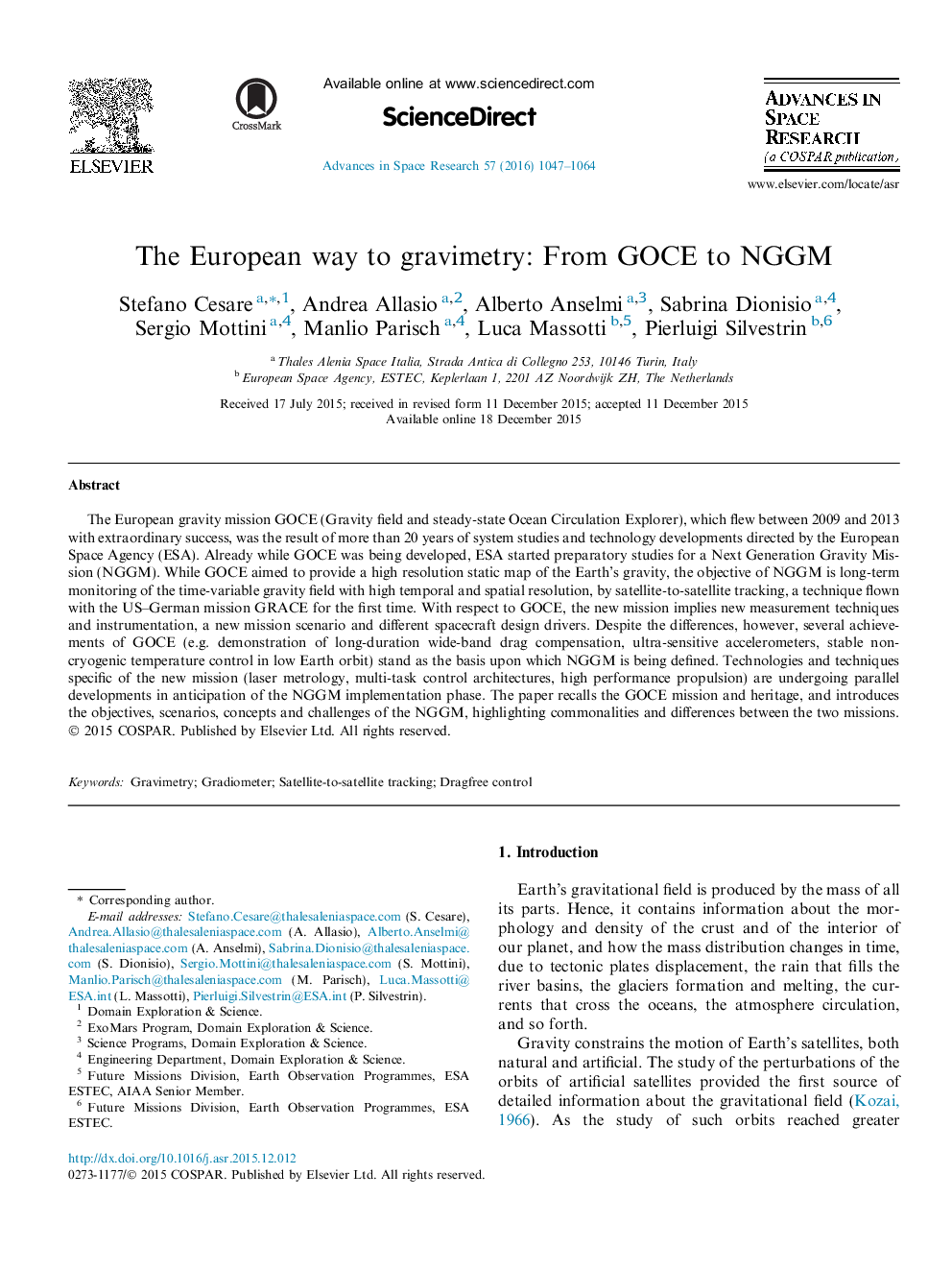| کد مقاله | کد نشریه | سال انتشار | مقاله انگلیسی | نسخه تمام متن |
|---|---|---|---|---|
| 1763364 | 1019999 | 2016 | 18 صفحه PDF | دانلود رایگان |
عنوان انگلیسی مقاله ISI
The European way to gravimetry: From GOCE to NGGM
دانلود مقاله + سفارش ترجمه
دانلود مقاله ISI انگلیسی
رایگان برای ایرانیان
کلمات کلیدی
موضوعات مرتبط
مهندسی و علوم پایه
علوم زمین و سیارات
علوم فضا و نجوم
پیش نمایش صفحه اول مقاله

چکیده انگلیسی
The European gravity mission GOCE (Gravity field and steady-state Ocean Circulation Explorer), which flew between 2009 and 2013 with extraordinary success, was the result of more than 20Â years of system studies and technology developments directed by the European Space Agency (ESA). Already while GOCE was being developed, ESA started preparatory studies for a Next Generation Gravity Mission (NGGM). While GOCE aimed to provide a high resolution static map of the Earth's gravity, the objective of NGGM is long-term monitoring of the time-variable gravity field with high temporal and spatial resolution, by satellite-to-satellite tracking, a technique flown with the US-German mission GRACE for the first time. With respect to GOCE, the new mission implies new measurement techniques and instrumentation, a new mission scenario and different spacecraft design drivers. Despite the differences, however, several achievements of GOCE (e.g. demonstration of long-duration wide-band drag compensation, ultra-sensitive accelerometers, stable non-cryogenic temperature control in low Earth orbit) stand as the basis upon which NGGM is being defined. Technologies and techniques specific of the new mission (laser metrology, multi-task control architectures, high performance propulsion) are undergoing parallel developments in anticipation of the NGGM implementation phase. The paper recalls the GOCE mission and heritage, and introduces the objectives, scenarios, concepts and challenges of the NGGM, highlighting commonalities and differences between the two missions.
ناشر
Database: Elsevier - ScienceDirect (ساینس دایرکت)
Journal: Advances in Space Research - Volume 57, Issue 4, 15 February 2016, Pages 1047-1064
Journal: Advances in Space Research - Volume 57, Issue 4, 15 February 2016, Pages 1047-1064
نویسندگان
Stefano Cesare, Andrea Allasio, Alberto Anselmi, Sabrina Dionisio, Sergio Mottini, Manlio Parisch, Luca Massotti, Pierluigi Silvestrin,